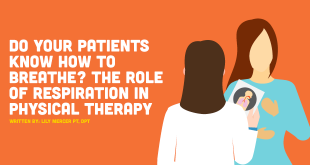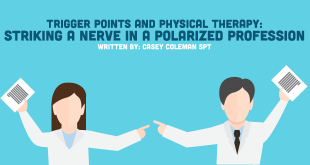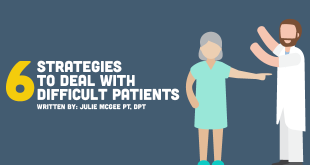Optimism
“A pessimist sees the difficulty in every opportunity; an optimist sees the opportunity in every difficulty.” -Winston Churchill
The Merriam-Webster dictionary defines optimism as “an inclination to put the most favorable construction upon actions and events or to anticipate the best possible outcome.” The term optimism is originally derived from the Latin optimum, meaning “best.” As with all psychological traits, differences in dispositional optimism, pessimism, and attributional style are heritable. Both optimism and pessimism are thought to be strongly influenced by environmental factors, including family environment, lifestyle, life events, etc.
It has also been suggested that optimism may be indirectly inherited as a reflection of underlying heritable traits such as intelligence, temperament, or alcoholism. Many theories assume optimism can be learned. Research supports a modest role of the family-environment influence to raise/lower optimism and lower/raise neuroticism and pessimism.
Optimism in health
Optimism and health appear to be at least moderately correlated. Optimism has been shown to explain between 5–10% of the variation in the likelihood of developing health conditions, such as heart disease, stroke, and depression. Furthermore, optimists may respond better to stress. Pessimists, on the other hand, demonstrate higher resting levels of cortisol, as well as trouble regulating cortisol in response to stressors.
Optimists tend to have fewer symptoms, measured both subjectively and objectively. Optimism is even connected to better immune function (with the exception of the presence of uncontrollable stressors) and a faster rate of recovery after illness and surgical procedures. Optimists appear to live longer compared to less optimistic people.
The level of optimism influences health behavior and sickness behavior. As more evidence continues to emerge connecting stress, chronic low grade inflammation, and psychosocial factors to health and pain, it would appear that optimism may have the ability to confer improved outcomes in many of the conditions that physical therapists work with daily.
Optimism as it relates to pain catastrophization
The fear-avoidance model (FAM) is widely used for explaining the development of chronic pain and disability. The FAM posits that certain individuals perceive pain as nonthreatening and thus perform and engage in activities that promote recovery. In contrast, other individuals perceive pain as threatening (i.e. pain catastrophizing). These individuals initiate processes that promote a cycle of fear-avoidance behaviors, whereby maladaptive behaviors contribute to higher pain and reduced function.
An abundance of evidence has highlighted the influence of pain catastrophizing and fear avoidance on clinical outcomes. Less is known about the interaction of positive psychological resources, such as optimism, with these pain-associated distress factors. However, in the recent January 2017 issue of the Journal of Sports and Orthopedic Physical Therapy (JOSPT), a group of authors explored just this topic.
The authors performed a secondary analysis of data from a subset of participants with shoulder pain enrolled in a randomized controlled trial. Individuals with a primary complaint of unilateral shoulder pain were invited to participate if they met the following criteria: between the ages of 18 and 65 years, English speaking, current episode of shoulder pain of less than 6 months, and current pain rated at greater than 4/10 on a numeric rating scale at rest and/or with activity.
There were 78 study participants who were randomized and completed a 2-week course of treatment involving spinal manipulation, shoulder manipulation, or shoulder exercises. At baseline, optimism was measured using the Life Oriented Test Revisited (LOT-R) along with measurements for shoulder function, fear avoidance, and pain catastrophizing.
Interestingly, at 3 months follow up, results from the trial showed no meaningful differences between randomized treatment groups for shoulder pain or function with imputation and complete data-assessment methods. However, after accounting for main effects, there was a significant interaction between optimism and pain catastrophizing on 3-month shoulder pain intensity.
As summarized by the authors, “while optimism was not found to be an independent predictor of outcome, optimism moderated the effect of pain catastrophizing on shoulder function. Previous cross-sectional studies have shown a potential protective role of optimism on pain-related outcomes through mechanisms related to pain catastrophizing and may highlight the ability of optimism to modulate cognition more readily than emotion.”
So what does this mean?
The findings of this study, paired with previous research conducted on optimism, may suggest a more complex picture for implementing targeted, psychologically informed treatment. Patients with high pain catastrophizing and low optimism may require strategies to boost characteristics typical of individuals with high levels of optimism.
This research further demonstrates the immense importance of measuring psychosocial, as well as personality traits, to formulate a more all-encompassing treatment approach. The statement that every patient is a “N=1 research study” is steadily becoming more apparent.
Research is beginning to demonstrate that consideration of not only functional and anatomic factors, but also psychosocial and personality factors, can help us tailor our interventions (and educational curriculum) to better match the needs of each individual.
How can we do this?
First, we can start by adding simple questionnaires to our intake paperwork. The LOT-R (pictured below and taken from the referenced article) is a short 10 item survey that should take no more than a minute or two. The Pain Catastrophizing Scale (PCS), is a simple 13 question inventory that takes no longer than 2-3 minutes. Both outcome measures provide extremely valuable insight into how we may need to structure our intervention before we ever even lay eyes OR HANDS on a patient.
Furthermore, it has been well demonstrated by several research studies that we can actually change an individual’s level of optimism. The most straight forward way to talk about turning a pessimist into an optimist is with the set of techniques known collectively as cognitive-behavioral therapies (CBT).
If you have read ANY recent updates on our understanding of the science of pain and intervention strategies to decrease pain, then you are familiar with CBT. The logic behind these techniques is that people sometimes have patterns of negative cognitive distortions. Certain kinds of negative thoughts foster negative affect and lead people to stop trying to reach their goals. We would imagine the interior monologue of the pessimist is filled with negativity, fear avoidance, and possibly even catastrophization.
CBT aims to make the cognitions more positive, thereby reducing distress and fostering renewed effort toward desired ends. Beliefs about one’s future would certainly be an important subset of the cognitions to target for change in such therapies.
When people change negative schemas about themselves and the world, or when they learn to deal more effectively with stress, they are more likely to gravitate toward an optimistic view of life. As an example, Antoni and colleagues (2001) tested an intervention among women who were newly diagnosed with non-metastatic breast cancer. The multi-modal intervention they implemented was an effort to instill a range of stress-management techniques. Positive reframing was one element in the broader treatment, but a relatively minor element. Nonetheless, that intervention proved to increase the women’s optimism scores over time compared to the control condition.
Check out this short video that will help explain CBT in more depth.
Next steps
Patients are complex. Pain is complex. Patients are people. Patients have personalities, histories, and emotions.
Patients have far more input into their evaluation of danger and output of pain than simple nociception. The research on optimism and how it can play a role in what we do as physical therapists is still in its very early stages at this point. However, there is an ongoing development of knowledge surrounding psychosocial factors in pain and recovery. Evaluation techniques and interventions aimed at improving optimism warrant serious consideration for their role in clinical practice.
References
Carver CS, Scheier MF, Segerstrom SC. Optimism. Clin Psychol Rev. 2010;30(7):879-89.
Conversano C, Rotondo A, Lensi E, Della vista O, Arpone F, Reda MA. Optimism and its impact on mental and physical well-being. Clin Pract Epidemiol Ment Health. 2010;6:25-9.
Coronado RA, Simon CB, Lentz TA, Gay CW, Mackie LN, George SZ. Optimism Moderates the Influence of Pain Catastrophizing on Shoulder Pain Outcome: A Longitudinal Analysis. J Orthop Sports Phys Ther. 2017;47(1):21-30.
Szondy, Mate. “Optimism and health.” Magyar Pszichologiai Szemle (Hungarian Psychological Review) 4.61 (2006): 617-636.
http://www.futuremedicine.com/doi/abs/10.2217/ahe.11.81?journalCode=ahe
 NewGradPhysicalTherapy.com The Largest Online Resource For New Grad Physical Therapists
NewGradPhysicalTherapy.com The Largest Online Resource For New Grad Physical Therapists








